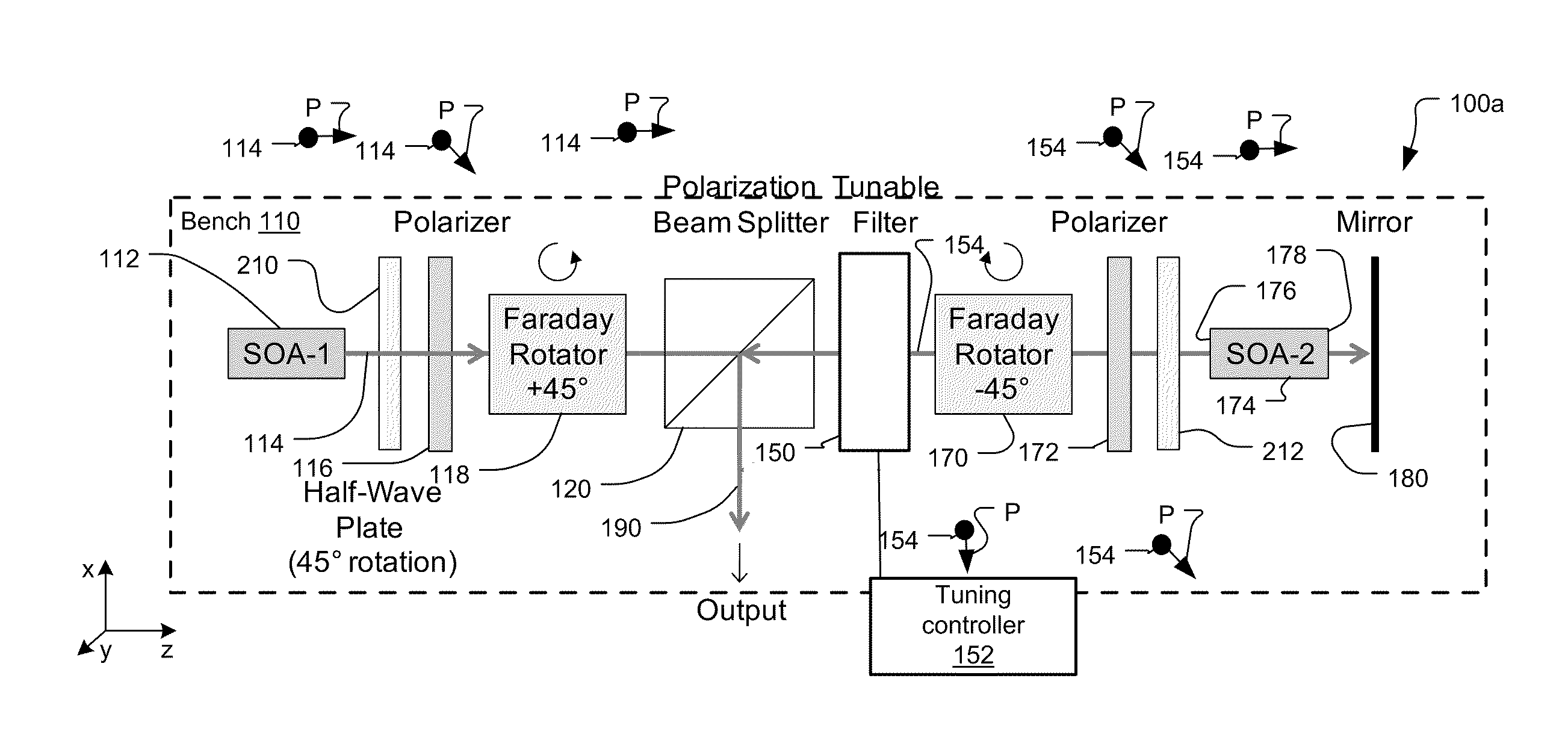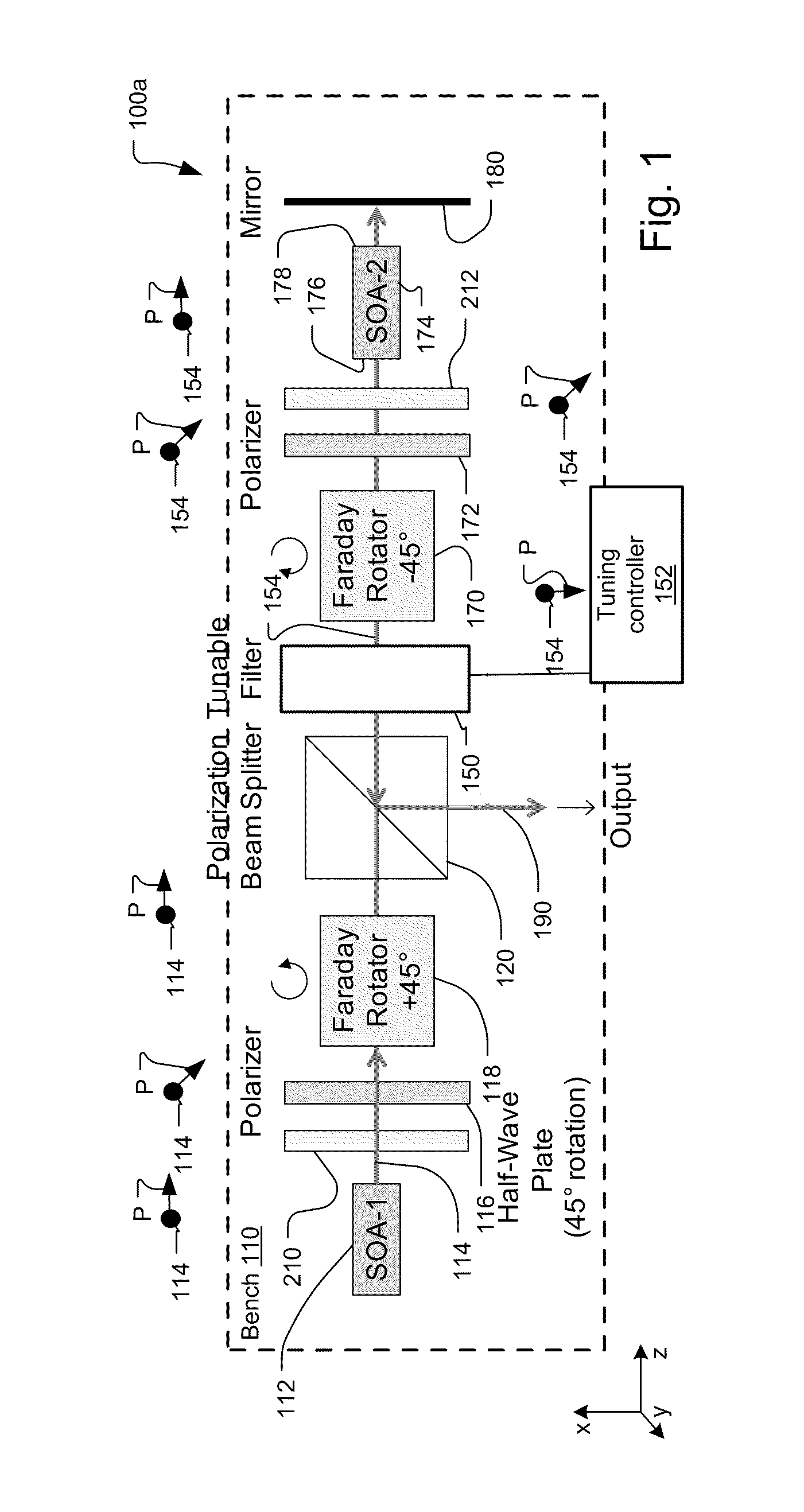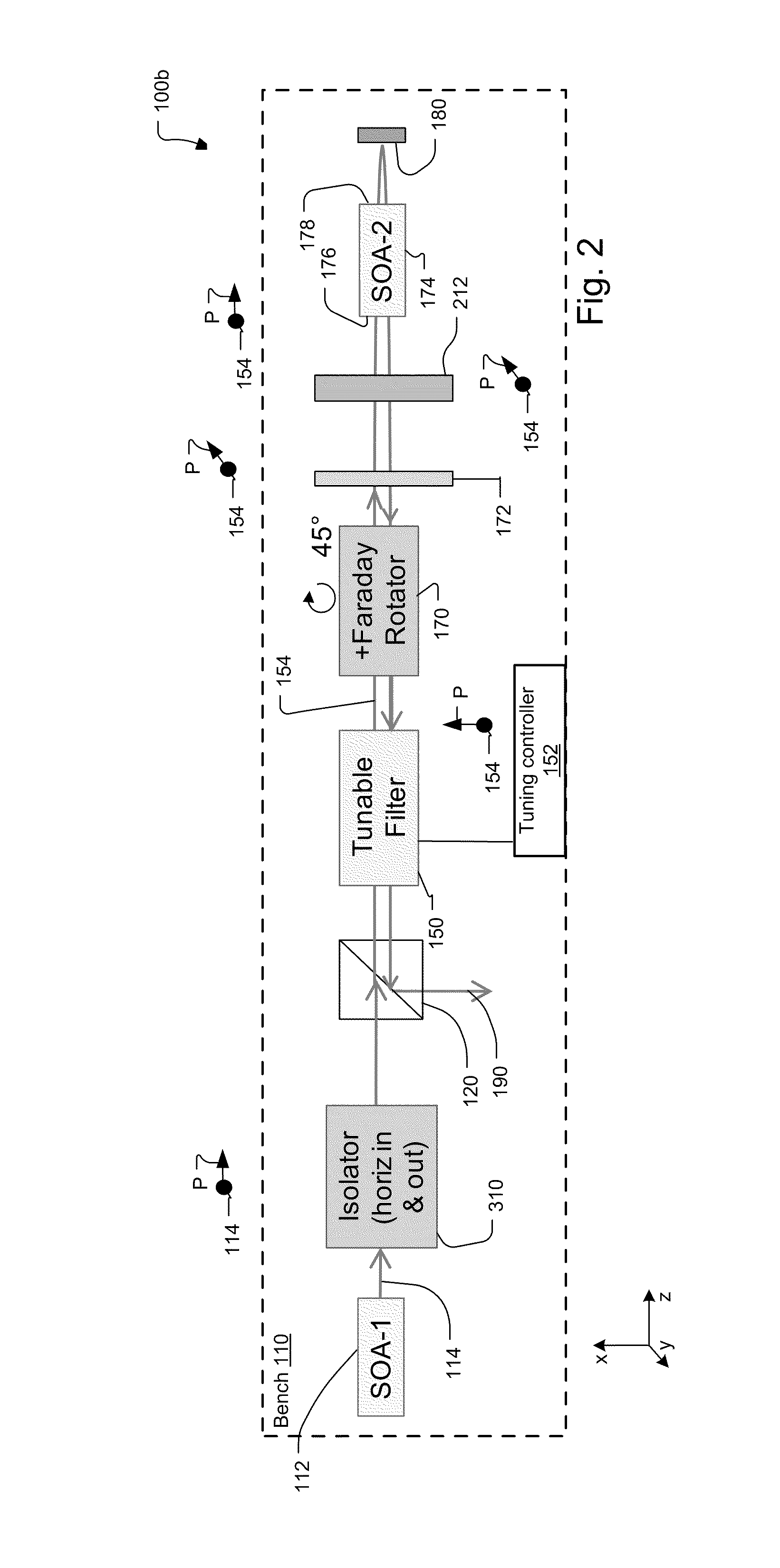ASE swept source with self-tracking filter for OCT medical imaging
a technology of self-tracking filter and swept source, which is applied in the field of swept source with self-tracking filter for oct medical imaging, can solve the problems of multiple tunable filter creating its own problems, affecting the power level of the output signal light, and affecting the synchronization of filters, so as to reduce the requirement for filter synchronization, narrow the spectral width of the signal, and reduce the effect of accuracy
- Summary
- Abstract
- Description
- Claims
- Application Information
AI Technical Summary
Benefits of technology
Problems solved by technology
Method used
Image
Examples
Embodiment Construction
[0050]In the following description similar components in the different embodiments are given the same or similar reference numerals to indicate similar construction and functionality.
[0051]FIG. 1 shows a first embodiment swept optical source 100a with contra-directional self-tracking filter using polarization diversity and a reflective, double-pass amplification stage, which has been constructed according to the principles of the present invention.
[0052]Preferably, the source 100a is entirely implemented on a single bench 110 with free space optics coupling the optical beams between the optical elements. In the coordinate system of the figure, the bench extends in the x-z plane and the y-axis extends vertically from the plane of the bench.
[0053]In other examples, many or most of the optical elements are implemented in common on a single optical bench. In yet other examples, two or more separate optical benches are used to implement the swept source, placing some optical components o...
PUM
 Login to View More
Login to View More Abstract
Description
Claims
Application Information
 Login to View More
Login to View More - R&D
- Intellectual Property
- Life Sciences
- Materials
- Tech Scout
- Unparalleled Data Quality
- Higher Quality Content
- 60% Fewer Hallucinations
Browse by: Latest US Patents, China's latest patents, Technical Efficacy Thesaurus, Application Domain, Technology Topic, Popular Technical Reports.
© 2025 PatSnap. All rights reserved.Legal|Privacy policy|Modern Slavery Act Transparency Statement|Sitemap|About US| Contact US: help@patsnap.com



